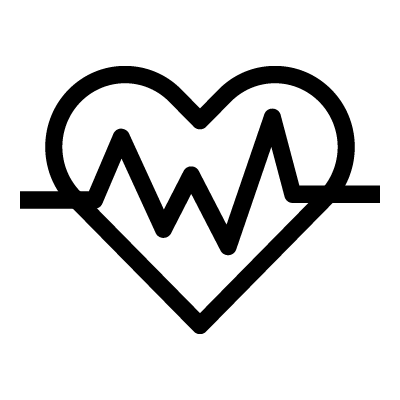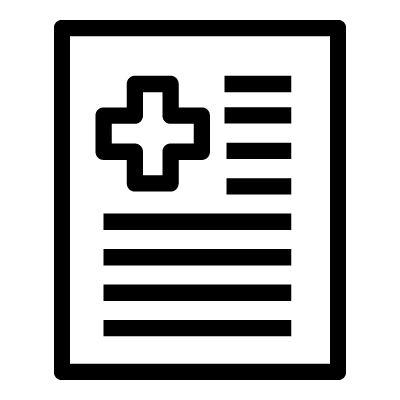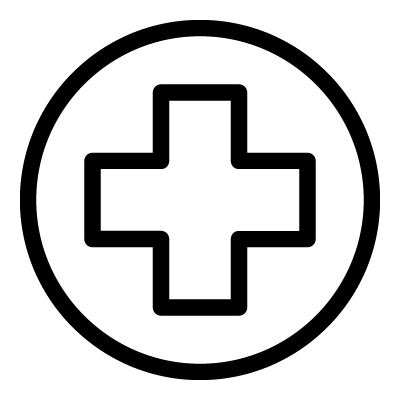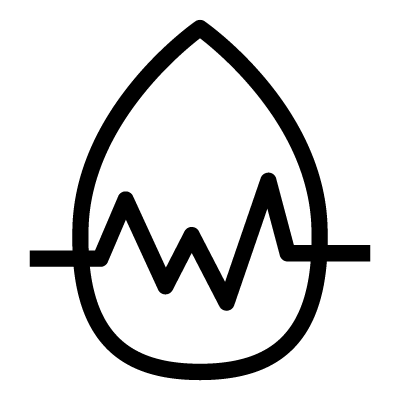Menstruation, also called menstruation, is an integral part of the functioning of the female hormonal and reproductive system. Menstruation is related to the entire menstrual and ovulatory cycle, and it is a process that can alert a woman, for example, to the successful procreation of an offspring. This is also the reason why, for example, menstruation does not occur during pregnancy.
From a physiological point of view, menstruation is characterized by periodic bleeding. This periodicity can be different for each woman, therefore the menstrual calendar is also individual. Sometimes menstruation may occur a week or two earlier, sometimes it may be delayed.
Since fertility, sex life or pregnancy and menstruation are interrelated, I decided to devote more space to this area of the functioning of the sexual system. We will therefore look at what its course is, whether menstruation can occur after childbirth and what it is like in transition.
What Is Menstruation
Menstruation is part of the regularly recurring menstrual cycle. It is the phase of the cycle during which the uterine lining is peeled off and the uterus is expelled together with the blood out of the reproductive system.
The menstrual cycle is most often 28 days long, with a possible 3 to 5 day variation in either direction, and runs from puberty to menopause
Menstruation is usually associated with ovulation, and if the released egg is not fertilised during ovulation, the menstruation process is triggered
So it is a rule that if a woman is not pregnant, she menstruates regularly
Sometimes the absence of menstruation is natural, for example, classic menstruation in pregnancy can not be, and if bleeding occurs, it is more likely a symptom of some more serious problem with the fetus or reproductive system. Likewise, the absence of menstruation is also common in the menopause, that is, in the period after transition.
If menstruation does not occur in other cases in a woman, it is necessary to look for it:
- Hormonal problems, whether directly a problem in the thyroid gland or a temporary hormonal imbalance of estrogens, progesterone or prolactin
- Diseases associated with the reproductive system, most commonly endometriosis associated with the uterus, ovarian cysts or general ovarian failure
- Other illnesses, most commonly infections and inflammation affecting the whole body, or the use of certain specific types of medication
- External factors, such as the effect of prolonged or intense stress, significant weight changes or excessive physical exhaustion
Pills for irregular menstruation and PMS
- I recommend a quality product
- improving the menstrual cycle
- counteracting oxidative stress
- improving vitality and health
- supporting the heart, blood vessels, nerves and metabolism
Menstruation, in addition to bleeding, is most often accompanied by cramps and pain in the abdominal area, many women are also troubled by pain in the lower back. A bigger problem is the intense symptoms before menstruation, which is also called premenstrual syndrome. This includes breast pain, fatigue, lower abdominal cramps, bloating, headaches and irritability.
Here are other interesting facts and figures related to menstruation:
- During menstruation there is an increased level of estrogens, which can cause more bleeding, for example from the nose, and more often 50 to 80 mg of blood is released during menstruation, more than 100 mg of blood is already considered to be intense bleeding with increasing age during sexual maturity, both the intensity and the average length of menstruation usually increases, usually to 5 to 7 days, but at the same time
- The length of the menstrual cycle decreases from puberty to old age, in puberty it can be as long as 35 or 40 days.
More Menstrual Periods Than Ovulations
Despite the association of ovulation and menstruation, a woman has menstruation more often than ovulation during her sexually adult life. This condition is called an anovulatory cycle, and such cycles are most commonly present during adolescence, puberty and the menopause.
The Course of Menstruation and the Phases of the Menstrual Cycle
The entire menstrual cycle should ideally last 28 days. But of course the duration can be different in transition, after childbirth during breastfeeding, menstruation is usually not yet ongoing and its onset is accompanied by several individual irregularities. But the standard menstrual cycle has the same course in every woman.
Here are the different phases of the menstrual cycle:
- Premenstrual phase: the initial phase of the menstrual cycle is basically the shortest in terms of time and usually lasts a few hours to a day. During this phase, necrosis and breakdown of cells in the uterine mucosa occurs due to degenerative changes, and this process is associated with several hours of uterine smooth muscle contractions.
- Menstrual phase: the second phase is the phase of menstruation itself. During this phase, the necrotic part of the mucous membrane separates, usually within 48 hours, with the help of menstrual blood. The uterus is involved in the expulsion of the blood, again by gentle contractions. Menstruation itself lasts from 2 to 7 days and can sometimes be accompanied by menstrual cramps.
- Regeneration phase: after the menstrual phase comes the third, regeneration phase. This phase usually lasts only two days after the menstrual phase, usually on the 4th and 5th day of the menstrual cycle. During this phase, the exposed surface of the uterine walls and mucosa is gradually restored, and at the same time, new epithelial cells grow from the glandular epithelium in the uterus.
- Follicular phase: the fourth phase of the menstrual cycle is the proliferative phase. Under the influence of follicle-stimulating hormone, the growth of estrogen-producing follicles, especially estradiol, occurs in the ovaries. Thanks to these hormones, a new layer of the endometrium develops. During the follicular phase, the leading follicle also develops and matures.
- Luteal phase: the last phase is the secretory phase, which takes place under the influence of a hormone from the corpus luteum, or progesterone. During this phase, processes important for fertilization occur, especially the filling of the glands with mucus-like secretion and the release of the egg from the ovaries into the fallopian tubes, or ovulation pills. In these, fertilizations of the egg by sperm can then take place.
Pills for irregular menstruation and PMS
I recommend a quality product which
- improving the menstrual cycle-
- counteracting oxidative stress-
- improving vitality and health-
- supporting the heart, blood vessels, nerves and metabolism
Disorders, Problems and Diseases Associated With Menstruation
Since the menstrual cycle and menstruation are influenced by several external and internal factors, menstruation is not always exemplary in terms of intensity, duration or timing. While some minor variations are natural, others may be a sign of more serious problems requiring medical diagnosis.
These are the most common situations and cases related to menstruation:
Weak menstruation: weak menstruation is typical, for example, in the first months of pregnancy, when it is technically not even menstruation, but bleeding that accompanies nesting. After the age of 50, menstruation gradually fades, which is also natural. Stress, hormonal contraceptives and problems with the cervix or uterine walls can also be behind weak menstruation.
Heavy menstruation: heavier periods can occur after childbirth or during the transition period, for example, but they must be temporary. If the intensity of the bleeding is really very heavy or if the heavier bleeding recurs over a long period of time, there may be a problem with hormonal imbalance, ovarian dysfunction, bleeding disorders or the effect of certain medications.
Long menses: a long menses means exceeding the normal bleeding period. If menstruation is longer than 10 days, it may be a sign of some polyps or even fibroids right in the uterus. Slightly longer bleeding also occurs when hormonal contraceptives are discontinued, possibly as a sign of inflammation or infection. It can also be related to the thyroid gland.
Frequent menstruation: if menstruation occurs too often, it may have several internal and external causes. From the less serious ones, such as forgetting to take contraceptives, to the more serious ones, often associated with some disease or disorder directly in the reproductive system. These are often polyps, fibroids, tumours, vaginal infection or infection of the uterus.
Off-cycle menstruation: did you get your period 2 weeks early? Such a condition is also called premature menstruation and often has a physiological or psychogenic cause. Problems of this type can also be caused by blood thinners, a thyroid problem or some disease of the uterus or vagina. Also watch out for sexually transmitted diseases, such as HPV.
Delayed menstruation: delayed menstruation is one of the most common and well-known symptoms of pregnancy. However, many women forget that there may be other causes and factors behind it, such as hormonal imbalances, stress, thyroid problems, use of hormonal contraceptives, excessive exercise or polycystic ovary syndrome.
Menstruation in Transition
A special chapter is regulating menstruation during menopause. Its typical feature is mainly irregularity, but if there are signs of too strong or long menstruation, it may be a symptom of a gynaecological problem. You can read more in my article about menstruation in transition.
How to Improve and Promote Healthy Menstruation
When it comes to the healthy course of the menstrual cycle, here there are several factors and causes that affect menstruation. Some are related to lifestyle, others more to the health of the reproductive system, hormonal levels or the influence of other diseases and disorders.
When supporting the menstrual cycle, I recommend focusing on a combination of promoting positive factors and limiting negative influences, especially from the external environment
In particular, I would like to bring to your attention the concept of hormonal balance and hormonal levels. Similarly to men, hormones probably have the greatest influence on the reproductive system and its functioning in women. In this respect, we need to focus in particular on oestrogen and progesterone, and especially in older women there is a problem with their balance.
Pills for irregular menstruation and PMS
I recommend a quality product
- improve menstrual cycle
- counteracting oxidative stress
- improving vitality and health
- supporting the heart, blood vessels, nerves and metabolism
Here are things you can do to promote healthy menstruation:
- Try to limit foods and drinks that can irritate the reproductive and hormonal systems, such as alcohol, spices, coffee and some root vegetables
- Regular exercise is important and positive, for example for libido, but too much exercise and physical exertion can cause delayed menstruation
- Extreme changes in weight, such as weight gain or weight loss, also have a negative impact on hormonal balance and also on the menstrual cycle
- Careful of psychogenic factors, for example stress, nervousness, fear, depression and general restlessness can upset the menstrual cycle
- To support hormonal levels, I recommend using natural sources, especially those containing phytoestrogens, such as nuts, seeds, soy or certain herbs
- Exercise can help during menstruation to relieve pain or some negative symptoms, for example, twisting the knees while lying down or rotating the spine while sitting
Frequently Asked Questions About Menstruation
Is there something more, something specific you are interested in about menstruation? So it was for this purpose that I decided to take a closer look at some internet forums and discussions. My goal was to find and answer the most asked questions by women about menstruation, especially from a practical point of view. Enjoy, here you will find them all in one place:
- What should a healthy menstrual cycle and menstruation look like?
The basis of a healthy course is regularity and a course without disturbing symptoms. The ideal cycle length is between 21 and 35 days. Menstruation, even with spotting at the beginning, should last from 5 to 7 days, should not be accompanied by pain and the amount of blood released should be up to 100 ml.
- Does menstruation ever occur without ovulation?
Yes, even statistically it is true that while a woman has an average of 500 menstrual periods in her lifetime, the number of ovulations is usually only 400. This condition is also known professionally as anovulatory cycle and occurs in every woman from time to time. Most of the time you don't even notice it, because menstruation is unchanged.
- How and when does the first menstruation come after abortion and curettage?
In the case of an abortion, the first menstrual period is usually weaker, irregular and usually lasts only 1 to 2 days. If it is a concealed miscarriage, on the other hand, it may come later, sometimes after more than 5 weeks. After curettage, it can come after 10 weeks.
- Does menstruation change in any way while on birth control and taking it?
Very often, women ask this question because their periods can sometimes be late and they are afraid of being pregnant. But delays are common while taking hormonal contraceptives, especially in the beginning. Later, the menstrual cycle should already be regular.
- Is there any way to stop or delay menstruation?
Many women ask how to stop menstruation, but in this case I have to say that biologically it is impossible to achieve this in a natural way. However, if it comes to postponing it, here there are more options, and this includes medication. I have described all the ways in detail in the article how to delay menstruation.
How Hormonal Balance Pills Work and Why I Recommend Them
In order to support the hormonal balance, which is also very important for the proper and healthy course of a regular menstrual cycle, you can also take phytoestrogens. This does not have to be only in the form of food, but also in the form of tablets that contain these substances.
Their composition is usually 100% natural:
Tablets work on the principle of long-term action and their active substances are most often in the form of a combination of plant extracts, minerals, vitamins and phytosterols
The composition of these preparations is often very varied. In addition to the phytoestrogens contained in soya extracts, you can also find various plant extracts, such as flaxseed or sage. The content of minerals and vitamins, such as Zinc, Selenium, B vitamins and the well-known antioxidant, vitamin C, is no exception.
At the same time, the pills have 3 very positive characteristics:
- The purchase of these tablets is not tied to a prescription or a prescription, so you do not need to visit a doctor to buy them,
- A great advantage is the easy dosage and especially the possibility of long-term use without the occurrence of any serious side effects
- I must also highlight the wide action, since some preparations can also act on certain negative manifestations of premenstrual syndrome
Pills for irregular menstruation and PMS
- I recommend a quality product-
- improving the menstrual cycle-
- counteracting oxidative stress-
- improving vitality and health-
- supporting the heart, blood vessels, nerves and metabolism
A number of these products can be bought not only in the pharmacy, but also, for example, via the Internet. Of course, I am talking about official eshops run directly by the manufacturers, not some suspicious advertisements. The most well-known brands even come with a money-back guarantee.
No Hormones or Hormone Treatment
I want to reassure and reassure all women that these products are not any form of hormone treatment and do not contain any synthetic hormones. Therefore, you do not have to worry that they might cause, for example, weight gain or have other similar side effects.
Available pills for treatment
If you would like to try some of the above tablets, there are a selection of brands on the market. Some are designed for specific situations, such as during transition, but also have an effect on the regularity of the menstrual cycle. Most preparations are mainly for hormonal support and contain phytoestrogens.
When selecting, place the greatest emphasis on the quality of the active ingredients, especially in terms of concentration. The second important criterion for selection should be experience. In the following table you will find the brands that my partner used and helped her the most:
Pills for irregular menstruation and PMS
- I recommend a quality product
- improving the menstrual cycle
- counteracting oxidative stress
- improving vitality and health
- supporting the heart, blood vessels, nerves and metabolism







